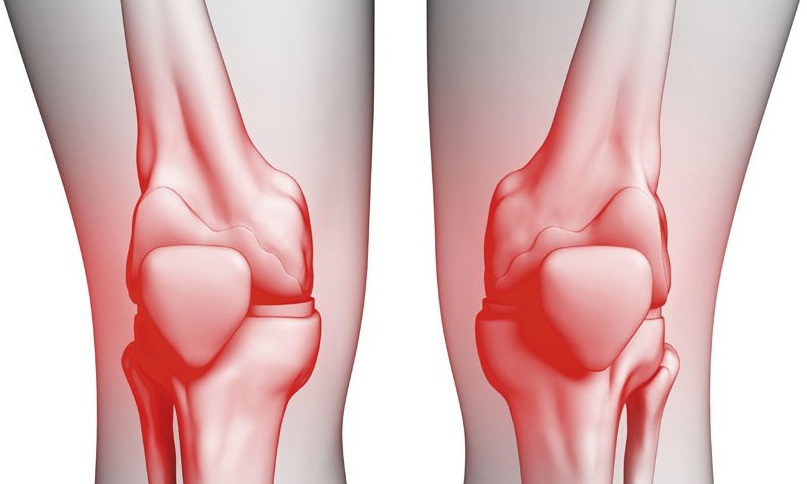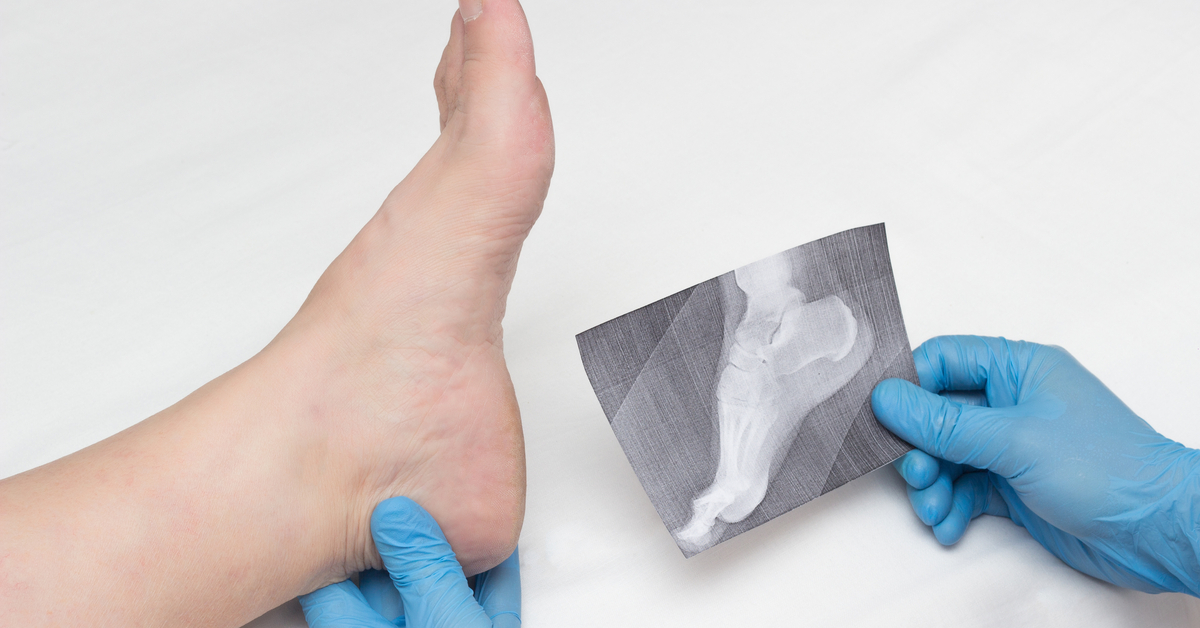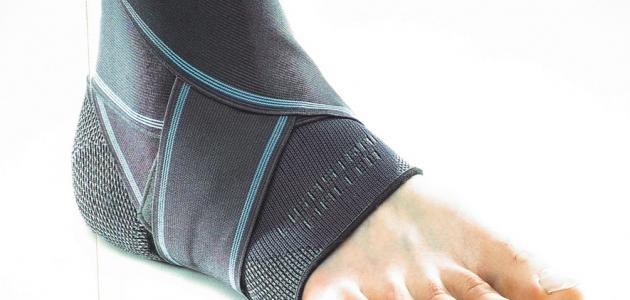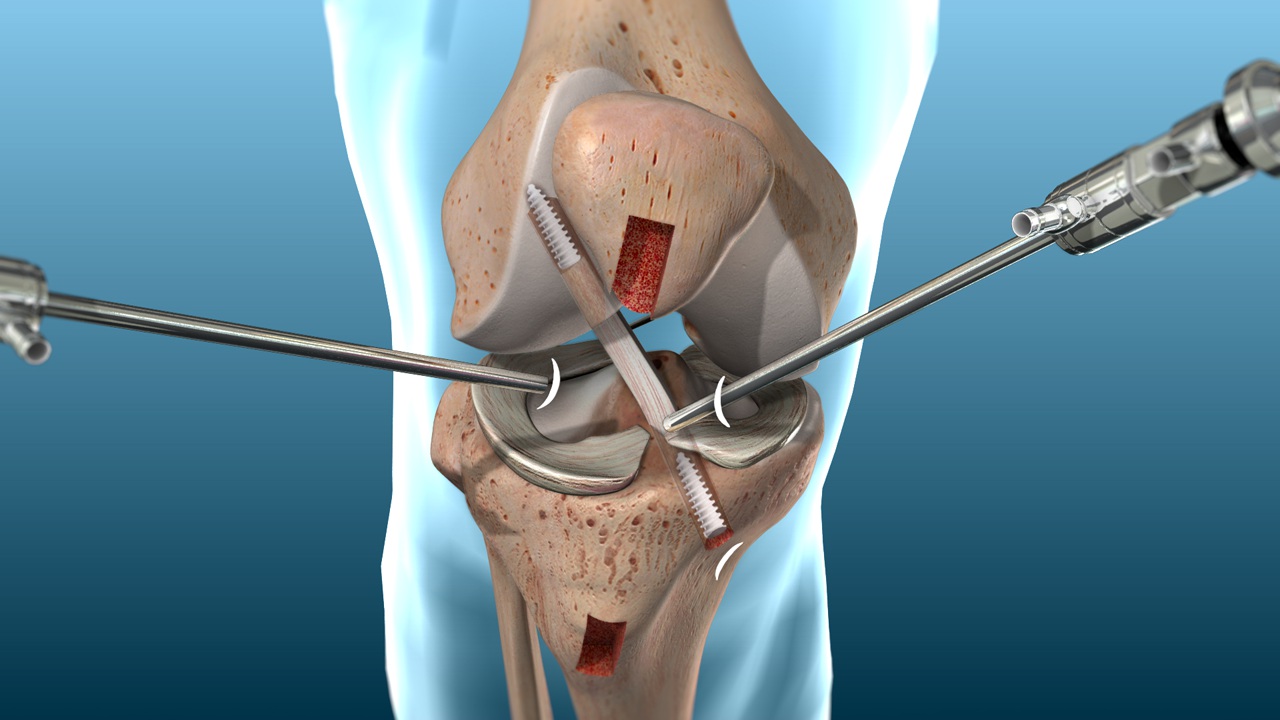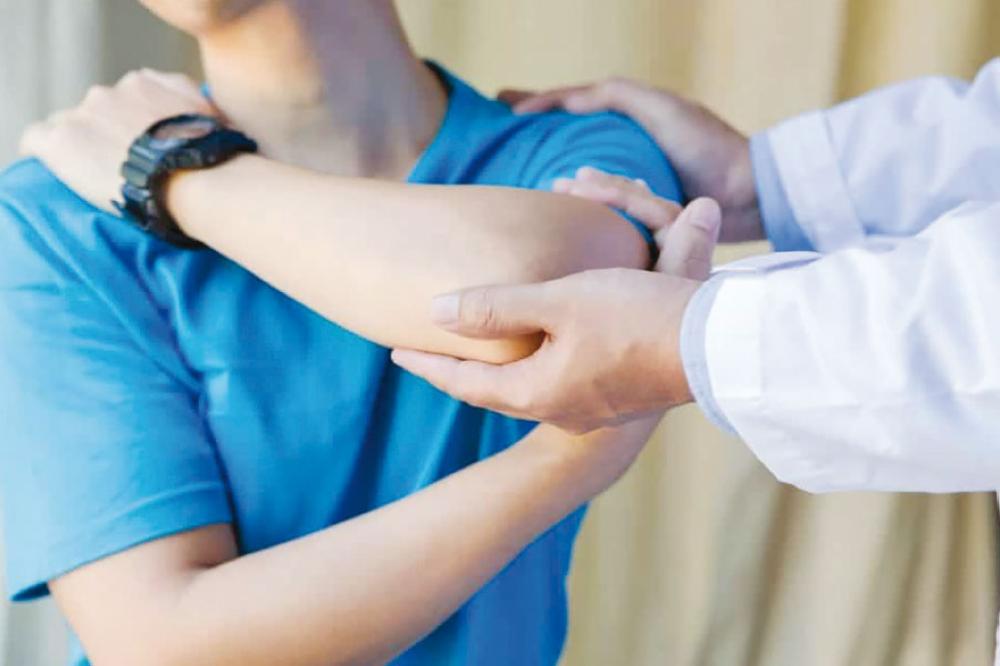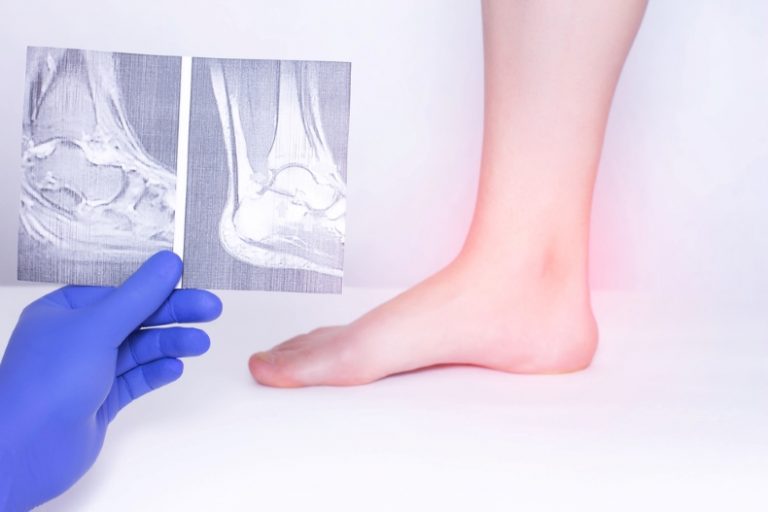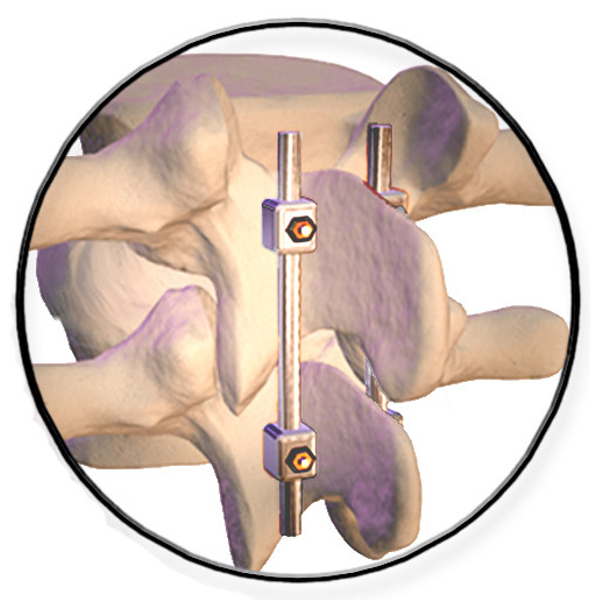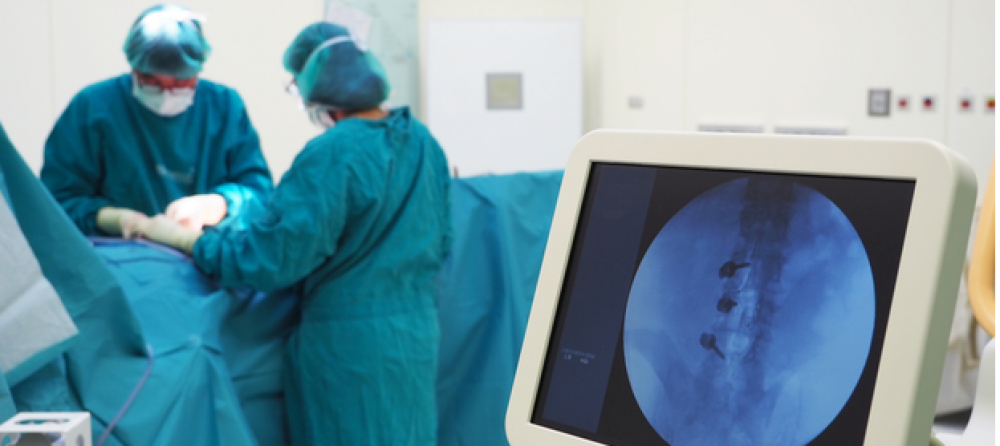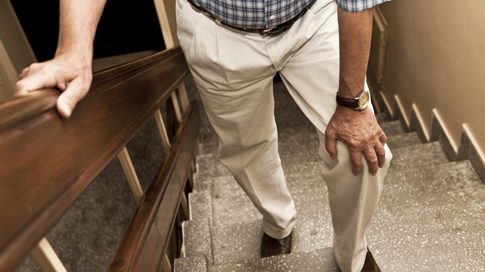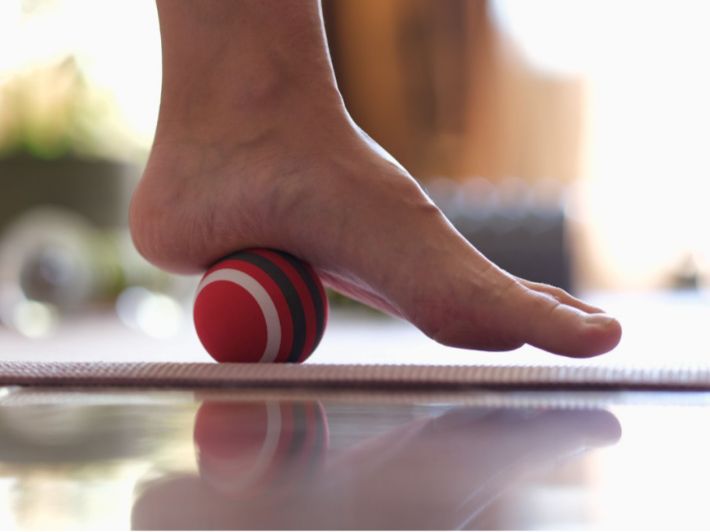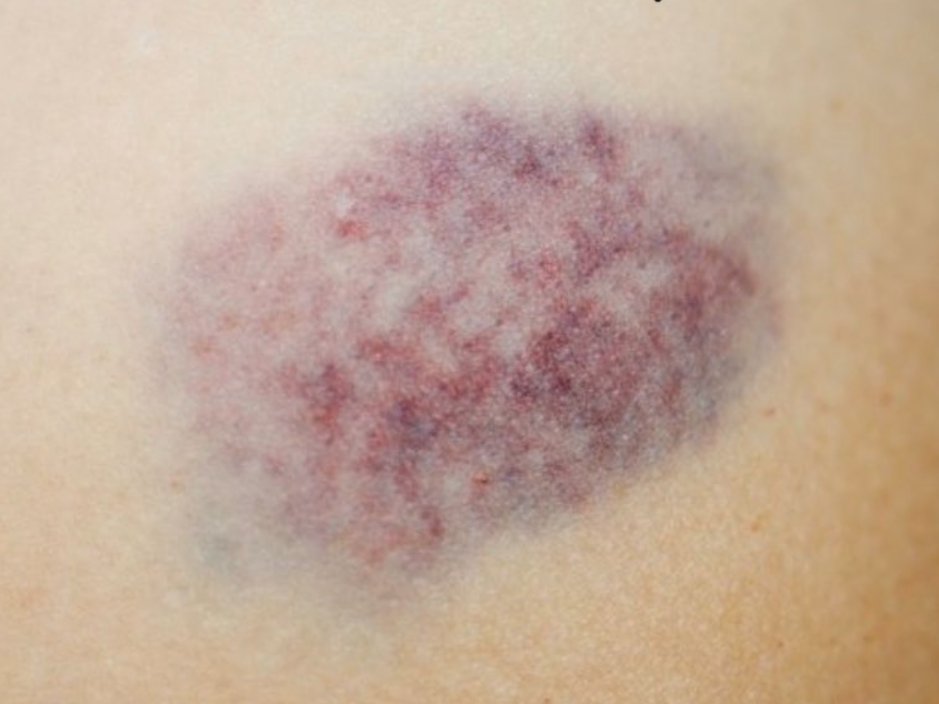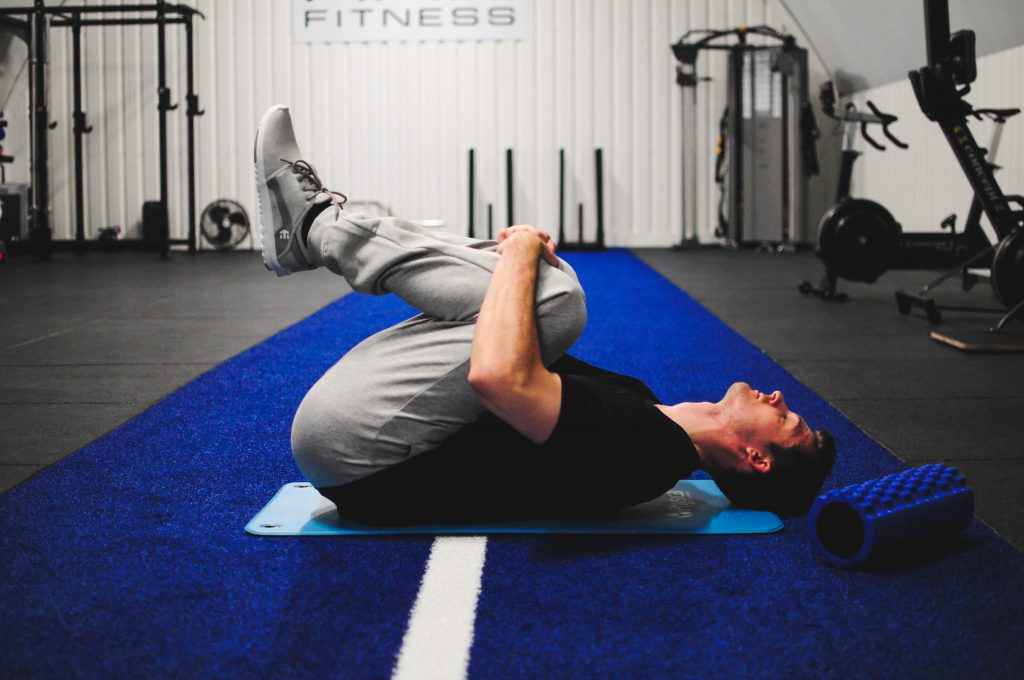What Is the Best Treatment for Back Pain? And What Causes It Suddenly?
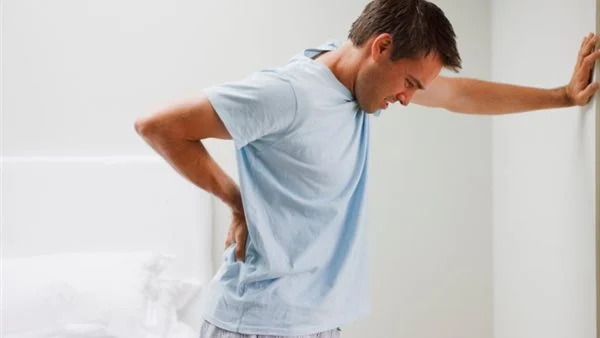
What Is the Best Treatment for Back Pain?
Back pain is a common issue that many people face at different stages of their lives. This pain can reduce the ability to perform daily activities and impact overall quality of life. As a result, many seek the best ways to treat back pain.
There are various different methods for treating back pain, whether through natural, medicinal, surgical, or alternative means. Here is a look at some of these approaches:
- Medicinal Treatment: Over-the-counter pain relievers like Paracetamol and non-steroidal anti-inflammatory drugs (NSAIDs) such as Ibuprofen and Naproxen Sodium are common options for treating back pain. These medications should be used according to the instructions on the packaging.
- Physical Therapy: Natural treatment methods for back pain include applying cold or hot packs to the painful area. Cold packs can help reduce inflammation and swelling in the spine, while hot packs can increase blood flow and oxygen to the affected muscles and areas, thereby accelerating the healing process.
- Surgical Treatment: In cases of severe and chronic back pain, surgical treatment may be necessary. Surgical treatment involves undergoing a procedure to correct the underlying problem causing the pain, such as disc removal or spinal fusion.
- Alternative Treatment: Alternative treatments for back pain include massage, thermal therapies like heat and cold therapy, herbal remedies, and acupuncture.
It’s important to evaluate the individual’s condition and determine the appropriate treatment based on the nature of the pain and its impact on daily life. The optimal treatment may require guidance from specialized medical professionals and a multidisciplinary team to achieve the best results. Remember that prevention is better than treatment, and some cases of back pain can be avoided by maintaining a healthy lifestyle, regular exercise, and proper posture while sitting and standing.
In the end, individuals suffering from back pain should consult a specialized doctor for an accurate diagnosis and appropriate treatment recommendations. The ideal treatment may vary from person to person, so collaboration with the medical team is essential to achieve the best results and alleviate pain.
How to Treat Back Pain at Home?
Back pain is a common health issue that many people experience. Home treatment may be the first choice for some, especially if the pain is not severe or doesn’t require immediate medical intervention. In this article, we will explore some effective ways to treat back pain at home.
Cold and Hot Packs: Cold packs are effective natural methods for treating lower back pain. They help reduce inflammation and swelling in the spine. On the other hand, hot packs increase blood flow and oxygen to the painful muscles and areas, thereby accelerating the healing process. Cold and hot packs can be used alternately, with each applied for 20 minutes, several times a day, for best results.
Exercise: Regular exercise is an effective way to strengthen back muscles and expedite their healing, thus treating back pain. Start with light physical activities like walking and household chores, then gradually progress to more vigorous exercise as pain improves. Aerobic exercises, swimming, and flexibility exercises can help strengthen back muscles and improve their condition. Exercise also stimulates the release of endorphins, which contribute to pain relief. Deep abdominal strengthening exercises, such as core exercises, help strengthen the spine-supporting muscles, helping to alleviate back pain.
Learn Medical Treatment with Rehabilitation and Physical Therapy: Physical therapists can teach you exercises that increase body flexibility, strengthen back and abdominal muscles, and improve body posture. These exercises can help reduce pain and enhance mobility. Additionally, physical therapists may guide you in using certain devices and techniques to assist in back pain treatment.
Rest and Pain Relievers: Rest and over-the-counter pain relievers are often the first-line treatments for back pain. They can effectively treat most patients. It’s advised to lie on a comfortable surface and use suitable pillows to support your back. Topical pain-relieving creams can also be applied to the painful area to alleviate pain.
It’s worth noting that if the pain persists or worsens, individuals should consult a specialized doctor for an accurate diagnosis and appropriate treatment. It’s also recommended to maintain a healthy lifestyle, avoid prolonged sitting without movement, and maintain proper body posture when sitting and standing. In the end, home treatment for back pain can be effective for mild to moderate cases, but for specialized treatment or severe pain, consultation with medical professionals is essential.
What Causes Sudden Back Pain?
Sudden back pain is a common health issue experienced by many people worldwide. Although a single cause is often challenging to determine, several factors can contribute to its onset.
One common cause of sudden back pain is the presence of a herniated disc, which is a bulging of the intervertebral disc that separates the vertebrae in the spine. This herniation can result from lifting heavy objects incorrectly, putting significant pressure on the back. Additionally, herniated discs can occur due to vertebral fractures or bone thinning.
Some sports activities can also cause sudden back pain, such as tennis or golf, which involve sudden movements and bending of the back. Lower back pain can occur when bending or lifting heavy loads during these sports. The lumbar spine, muscles, ligaments, discs, and surrounding nerves can be injured and worn out due to their intensive use.
Furthermore, there can be multiple and varied organic causes of sudden back pain. It may result from sleeping in an improper position, where the spine can be subjected to abnormal pressure during sleep, leading to back pain. Disc injuries can also occur suddenly after lifting heavy objects or twisting the back, and the pain resulting from disc injury usually lasts for more than 72 hours.
It is also important to note that most back pain is due to disorders in the spine, joints, muscles, ligaments, and surrounding nerve roots or the discs between the vertebrae. This vital part of the body can be injured and worn out due to intensive use, falls, or car accidents.
In conclusion, individuals experiencing sudden back pain should consult a specialized doctor for an accurate diagnosis and identification of the actual causes of the pain. Additional tests and examinations may be required to determine the cause and develop an appropriate treatment plan.
What Herbs Help Relieve Back Pain?
The back is a vital part of the body that many people suffer from painful conditions at various stages of their lives. In many cases, medical drugs and physical therapy are used to alleviate these pains. However, there are also many herbs considered as effective natural alternatives for relieving back pain.
One of the effective herbs in relieving back pain is Cayenne pepper, which contains a compound called capsaicin that works to reduce pain by stimulating nerves and reducing pain signals sent to the brain. Cayenne pepper can be used in the form of a cream or massage oil for localized pain relief.
Devil’s Claw is another herb known for its effectiveness in relieving back pain. This herb contains anti-inflammatory compounds that work to reduce inflammation and pain. It can be taken as a dietary supplement or consumed as Devil’s Claw tea.
Willow Bark is another natural herb used to alleviate back pain. Willow bark contains a compound called salicin, which reduces inflammation and pain. Willow bark can be taken as an extract or used to make tea.
Turmeric is another herb known for its benefits in reducing inflammation and pain. Turmeric contains a compound called curcumin, which works to inhibit inflammatory enzymes and reduce inflammation in the body. Turmeric can be added to food or taken as a dietary supplement.
Ginger and Green tea are also natural herbs known for their benefits in relieving back pain. Ginger contains anti-inflammatory compounds that reduce inflammation and pain. It can be consumed as ginger tea or added to food. Green tea is rich in antioxidants that reduce inflammation and pain.
In addition to the herbs mentioned above, there are many other herbs that can be used to relieve back pain, such as thyme, basil, ginger, and lavender. These herbs can be used in the form of massage oils, tea, or dietary supplements.
It is important to mention that the use of herbs to relieve back pain should be done carefully and under medical supervision. Before using any herb, it is advisable to consult a doctor to ensure there are no interactions with other medications being taken.
In conclusion, the herbs mentioned above are considered effective natural alternatives for relieving back pain. However, they should be used with caution and under medical supervision to ensure maximum benefit and avoid any unwanted side effects.
Does the Bed Cause Back Pain?
Back pain is a common health issue that many people of various ages experience. Among the potential factors that may contribute to back pain, some suggest that the bed may be one of the factors causing it. Is this true, and can the bed cause back pain? Let’s take a look at this topic.
The bed may be one of the contributing factors to the onset of back pain, but it is not the sole factor or the main cause of such pain. When we sleep, the bed should be able to support the spine and provide a comfortable and healthy sleeping position. If the bed is not suitable for your body and does not provide the necessary support, it may increase the likelihood of developing back pain.
Several factors should be considered when choosing the right bed to avoid back pain:
Bed Firmness: It is recommended to choose a bed with medium firmness, neither too firm nor too soft. An overly firm bed may lead to muscle tension and stiffness, while an excessively soft bed may not provide adequate support for the spine.
Pillow: In addition to the bed, choosing an appropriate pillow is also important. It is recommended to select a pillow that provides support for the neck and spine and is comfortable to sleep on. The pillow should be suitable for your preferred sleeping position (back, side, or stomach) and help maintain spinal alignment.
Sleeping Position: The sleeping position should be correct to avoid back pain. Sleeping on the side with a pillow between the knees is recommended for better spinal alignment. Sleeping on the back should involve a small pillow under the head and another small pillow under the knees to support the spine. Sleeping on the stomach is considered a less healthy position for the spine.
In addition to these factors, there are other considerations to maintain back health, such as maintaining good posture while sitting and standing and engaging in appropriate exercises to strengthen the back and abdominal muscles.
In general, it can be said that the bed may be one of the contributing factors to the onset of back pain, but it is not the only factor, nor is it the main cause. If you are experiencing persistent back pain, it is advisable to consult a doctor to determine the true causes and receive appropriate treatment.
What Causes Lower Back Pain Above the Buttocks?
Lower back pain above the buttocks is a common health issue that many people experience. Typically, the cause of this pain is non-pathological, such as standing or sitting in incorrect positions, being overweight, and other factors. However, it’s important to be aware that there are cases where back pain may result from a serious issue in the spine, such as infection, a tumor, or a condition known as “cauda equina syndrome.”
Most lower back pain is due to disorders in the spine, joints, muscles, ligaments, nerves surrounding them, or the discs between the vertebrae. In approximately 20% of cases, organic causes for severe back pain are rarely identified. Injuries or strenuous activities can lead to back pain. Nevertheless, back pain can also be related to traumas from accidents and acute stress.
One possible cause of upper buttock and lower back pain in both women and men is sciatica. Sciatica occurs as a result of compression or blockages in the sciatic nerves. The sciatic nerves extend from the lower spine to the knees and pass through the buttock area. Sudden coccyx pain can occur during pregnancy, after childbirth, or due to falls and may be related to the rectum and hemorrhoids. Some individuals may experience coccyx pain due to irritation of the rectum or the presence of hemorrhoids. This pain can lead to various uncomfortable symptoms, such as pain, itching, and bleeding.
To treat upper buttock and lower back pain, home remedies like applying hot or cold compresses to the affected area can be used. Additionally, engaging in exercises to strengthen the back and abdominal muscles, as well as maintaining good posture while sitting and standing, can be helpful. Some people may require additional medical treatment, such as taking pain-relieving medications or undergoing physical therapy.
It is essential to consult a doctor if the pain persists for an extended period or is accompanied by other symptoms such as muscle weakness or leg numbness. A doctor may conduct necessary tests to determine the true cause of the pain and prescribe appropriate treatment.
In general, taking care of the spine and maintaining a healthy lifestyle is crucial for preventing back pain. Regular exercise, maintaining a healthy weight, avoiding prolonged sitting in the same position, and maintaining good posture while sitting and standing are recommended practices to prevent back pain.
In summary, upper buttock and lower back pain can result from non-pathological factors such as poor posture, incorrect sitting positions, or excess weight. However, it can also be a result of a serious issue in the spine, such as infection or a tumor. Consultation with a doctor is advisable if the pain persists for an extended period or is accompanied by other symptoms. Back pain prevention involves regular exercise, maintaining a healthy weight, and practicing good posture.
Using Hot and Cold Therapy for Back Pain
When experiencing back pain, hot packs can be used to apply heat to the affected area. Hot water bags, hot baths, or placing a hot water bottle on the back are all methods that can be employed. These treatments are believed to work by increasing blood flow and oxygen to the affected area, which can help alleviate pain and relax tense muscles.
It is recommended to apply heat to the back for a duration ranging from 15 to 20 minutes several times a day. The hot water should be at a comfortable temperature and not too hot to avoid causing burns.
However, it is advised to use cold therapy on the lower back during the first 24 to 72 hours after experiencing back pain. Applying cold therapy can reduce inflammation and alleviate pain. Cold packs or placing ice in a towel and applying it to the back for 15 to 20 minutes several times a day can be used.
If you have chronic back pain or chronic arthritis, it may be best to consult a doctor before using heat or cold therapy. Your doctor may suggest the use of heat or cold therapy based on your overall health and medical diagnosis.
In addition to using thermal therapies, light exercises, relaxation, and massage can also be practiced to alleviate back pain. These simple treatments may be helpful in improving comfort and reducing pain.
In conclusion, everyone should try and consult their doctor to determine the most suitable treatment for their personal condition. Localized heat therapy may be helpful for some people in alleviating back pain, while it may not be effective for others.
Causes of Lower Back Pain in Women
Lower back pain is a common issue that many women experience. This pain can be troublesome and affect daily life and routine activities. There are several potential causes of lower back pain in women, including:
- Premenstrual Syndrome (PMS): Premenstrual syndrome is a common condition that occurs before the start of the menstrual cycle and is sometimes accompanied by lower back pain. Hormonal changes during this period are believed to affect the muscles and ligaments in the back, causing pain.
- Arthritis: Arthritis is one of the common causes of lower back pain in women. Arthritis can lead to damage to the cartilage and tissues surrounding the joints, resulting in pain and swelling in the back.
- Herniated Discs: Herniated discs are a major cause of lower back pain in women. These conditions occur due to the natural wear and tear of spinal discs, leading to pressure on the nerves and surrounding tissues, causing pain.
- Muscle Strain: Muscle strain is a common cause of lower back pain in women. It can occur due to daily strenuous activities, heavy lifting, or sudden unnatural movements. Muscle strain can lead to muscle spasms and nerve irritation, causing lower back pain.
- Injuries and Infections: Injuries and infections in the back area can also be causes of lower back pain in women. Injuries may occur due to falls, accidents, or strenuous sports activities. Various infections in the tissues surrounding the spine can also cause pain.
In summary, lower back pain in women can have various causes, including hormonal factors like PMS, arthritis, herniated discs, muscle strain, injuries, and infections. It is essential to consult a healthcare provider to diagnose the underlying cause of back pain and determine the appropriate treatment.
Diagnosing the Cause of Back Pain in Women
The cause of back pain in women should be diagnosed by a specialized doctor, as it requires a comprehensive evaluation of the medical history and necessary examinations. Treatment may be directed based on the potential cause of the pain, which may include lifestyle changes, muscle-strengthening exercises, physical therapy, and pain-relieving medications.
It is also essential to take care of the back and follow some guidelines to prevent back pain, such as maintaining good posture while sitting and standing, lifting heavy objects correctly, and regularly engaging in exercise to strengthen the muscles.
In summary, back pain in women is a common problem and can result from several possible causes such as premenstrual syndrome, arthritis, herniated discs, muscle strain, injuries, and infections. Consulting a specialized doctor is necessary to diagnose the potential cause and guide appropriate treatment.
How Long Does Recovery from Back Muscle Strain Take?
Back muscle strain is a common condition that occurs due to the stretching or tearing of muscles in the back area. Muscle strain can result from excessive stress on the muscles, either from intense physical activities or maintaining an uncomfortable position for an extended period. Muscle strain can cause severe pain, painful muscle contractions, and may affect movement and the ability to perform daily activities normally.
The duration of recovery from back muscle strain varies depending on the severity of the condition and individual factors. Typically, mild to moderate muscle strains may require a week to two weeks for complete recovery, with the back muscle strain symptoms completely disappearing. However, in some cases, pain and swelling may persist for a longer period.
There are some measures that can be taken to expedite the recovery process from back muscle strain. Applying ice packs to the affected area for 10 to 15 minutes every hour on the first day and repeating this every 3 to 4 hours on the following days is recommended. Non-steroidal anti-inflammatory medications such as ibuprofen or naproxen can also be used to reduce pain and swelling.
Some individuals may need long and intensive treatment for chronic back muscle strain. For example, individuals experiencing persistent back muscle spasms may require lengthy and intensive therapy sessions. These sessions may include deep heat therapy (shortwave), as well as other techniques like deep tissue massage and physical therapy exercises.
In general, mild to moderate muscle strain symptoms may subside within a few weeks. More severe cases may take months for complete recovery. Patients should adhere to their doctor’s instructions and recommended conservative treatment to improve recovery chances and avoid exacerbating the condition.
Ultimately, individuals suffering from back muscle strain should consult a specialized doctor to evaluate the condition and guide appropriate treatment. Ignoring symptoms, ensuring rest, and following medical guidance are crucial for speeding up the recovery process and returning to normal life.
Does Walking Help Relieve Lower Back Pain?
Walking is a simple and easy activity that can have a significant impact on relieving lower back pain. Real-world data indicates that walking provides many benefits for patients with herniated discs and helps reduce the pressure on the spine, lowering the risk of recurrent disc herniation.
One of the key benefits of walking for patients with herniated discs is reducing the pressure on the spine. When walking, weight is evenly distributed on the spine, reducing the pressure on the vertebrae and discs. This helps alleviate pain and improve the overall condition of patients.
Additionally, walking helps increase the flexibility of the spine. Engaging in physical activity like walking allows for natural and regular movement of the spine, enhancing its flexibility and improving mobility. This helps alleviate pain and enhances the ability to perform daily movements correctly. Walking also lubricates the vertebrae and discs, which is essential for the recovery from herniated discs. Engaging in physical activity increases the flow of synovial fluid in the spine, promoting nourishment and hydration of the vertebrae and discs, aiding in the healing of herniated discs.
Studies suggest that physical activity and low-intensity aerobic exercises like walking are highly beneficial in relieving chronic lower back pain. Walking strengthens the muscles that support the spine and helps restore normal spinal function. In addition, low-intensity aerobic activities like walking help reduce pain and improve the overall condition of patients.
According to studies, manual therapists and physical therapists typically recommend continuing home exercises to improve body movement and strengthen back muscles. It is generally recommended to walk for at least three hours a week for health benefits. However, walking and any other physical activity should be done cautiously and guided by physicians and experts, considering the patient’s condition.
In general, walking is considered a healthy and beneficial activity for most people, including those with herniated discs. Walking helps alleviate herniated disc pain and reduces the likelihood of recurrence. However, walking and any other physical activity should be practiced carefully and guided by physicians and experts according to the patient’s condition and recommendations.
Can You Wear a Back Belt While Sleeping?
A back belt is considered an effective tool for alleviating severe back pain, and doctors may recommend wearing it to maintain spinal alignment at all times. But can you wear a back belt while sleeping? This is a question that concerns many people.
Expert opinions on using a back belt while sleeping vary. While some believe that wearing the belt at night can be helpful for those experiencing severe back pain, others believe it may be harmful and ineffective.
In theory, a back-supporting belt can be beneficial for providing support and maintaining alignment of the spine. It can potentially reduce pressure on nerves and spinal discs, thus reducing pain and muscle tension. Therefore, wearing a back belt during the day may be helpful for people suffering from chronic back pain or acute injuries. However, when it comes to wearing a back belt while sleeping, the benefits are less clear.
Sleeping positions can vary greatly, and a back belt may not provide the same level of support and alignment during sleep as it does during waking hours. Some experts argue that wearing a back belt during sleep may lead to discomfort or restriction of movement, potentially interfering with sleep quality.
Ultimately, whether or not to wear a back belt while sleeping should be a decision made in consultation with a healthcare professional. They can provide personalized advice based on the specific condition and needs of the individual. It’s important to consider alternatives such as proper mattress and pillow choices, sleeping positions, and other treatments when addressing back pain during sleep.
However, when it comes to wearing a back belt while sleeping, there are some important considerations. Wearing a belt during sleep may be uncomfortable and can affect sleep quality. Additionally, wearing the belt for an extended period during sleep can reduce the movement of the spine and muscles, potentially leading to weakness and stiffness.
Of course, doctors may recommend wearing a back belt during sleep in certain cases. For example, if you have a severe spinal injury or suffer from herniated disc problems, your doctor may recommend wearing a back belt during sleep to provide the necessary support and reduce pain. Therefore, individuals considering wearing a back belt during sleep should consult with their attending physician. The doctor will be better able to evaluate the condition and determine whether wearing the belt during sleep is necessary or not.
In general, maintaining spinal alignment at all times and engaging in exercises that strengthen the spine are essential for preventing back problems. Regardless of the decision to wear a back belt during sleep, individuals should focus on daily physical activity and follow a healthy lifestyle to maintain back health.
Best Doctor for Treating Spinal Issues
Dr. Amr Amal is considered one of the best doctors specializing in spinal surgery in Egypt. He is distinguished by high competence and extensive experience in this field and has achieved great success in treating many spinal conditions.
Spinal disorders are among the most common health conditions in society, causing severe pain, reduced mobility, and impaired ability to perform daily activities. Examples of these disorders include disc herniation, arthritis, spinal stenosis, scoliosis, and more.
Dr. Amr Amal diagnoses and treats these conditions using modern, high-tech methods without the need for traditional surgery. He employs innovative and advanced therapeutic techniques to relieve pain and improve patients’ conditions. Among the techniques used by Dr. Amr Amal in treating spinal issues are regenerative surgery and nanotechnology-based regenerative injections. These techniques utilize advanced medical materials to renew and enhance damaged tissues in the spine, effectively reducing pain.
In addition, Dr. Amr Amal excels in spinal surgery, relying on advanced and innovative surgical techniques to perform surgeries with precision and high safety. He collaborates with a specialized and qualified medical team working comprehensively to provide excellent medical services to patients. Dr. Amr Amal is also one of the specialists in orthopedic and joint surgery, possessing extensive experience in this field. He has successfully performed numerous surgeries to treat bone and joint diseases and injuries.
Patients can also inquire about Dr. Amr Amal’s patient evaluations and the insurance plans he accepts. He is committed to providing high-quality and comprehensive medical services to patients and works to offer the best facilities and insurance coverage to meet their healthcare needs.
In summary, Dr. Amr Amal is the best doctor for treating spinal issues in Nasr City. He is highly competent and experienced in spinal surgery, using modern therapeutic techniques to improve patients’ conditions and relieve pain. He has achieved great success in treating various spinal conditions, making him the optimal choice for those experiencing back problems and seeking appropriate treatment.

